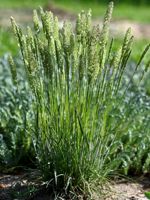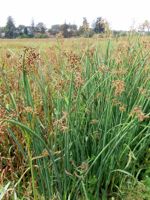Mon-Fri 9am - 5pm Mountain time
Junegrass vs Softstem Bulrush
Koeleria macrantha
Schoenoplectus tabernaemontani
NOT AVAILABLE THIS SEASON - MIGHT RETURN
CUSTOM GROW
Junegrass is a native, low-growing perennial bunchgrass commonly found in prairies and open woodlands. It is a great choice for prairie restoration and naturalization projects or an attractive accent in ornamental plantings. Spear-shaped seed heads rise above the gray-green lower leaves, maturing to a tan color. Flowering earlier than other upright prairie grasses, it greens up quickly in spring and maintains its appeal well into the fall. It is shorter in stature and rarely forms thick stands, which adds to its understated visual appeal.
Adapted to cooler climates, Junegrass thrives in well-drained, rocky, sandy, or gritty soils and can tolerate drought, cold, and high altitudes. It actively grows in spring and fall when soil temperatures are cool, but in areas that are too hot or humid, it may go dormant by late summer.
As a perennial, it dies back to the crown each winter, it will regrow from the base in the spring. Avoid disturbing the crown during late winter to ensure healthy growth the following season.
Softstem Bulrush is a native perennial sedge that forms dense colonies of tall, upright stems. Thriving in saturated soils and shallow water, it spreads vigorously by rhizomes, creating large colonies that stabilize shorelines, control erosion, and strengthen wetland ecosystems.
Dense stands of Softstem Bulrush create shelter and nesting sites for birds, while also supporting aquatic invertebrates and the larvae of numerous insects. It is also an important food source. Many wetland birds, especially ducks, feed on the seeds, while muskrats feed on the foliage and rhizomes. Well-suited for ecological restoration, waterside & riparian plantings, erosion control, and habitat enhancement projects.

